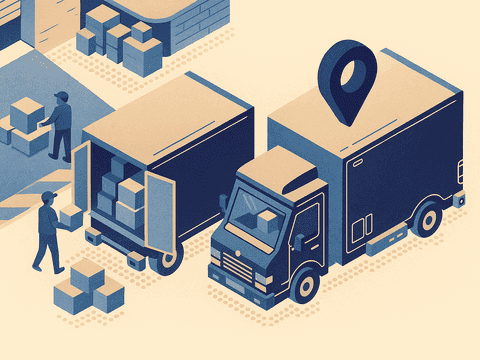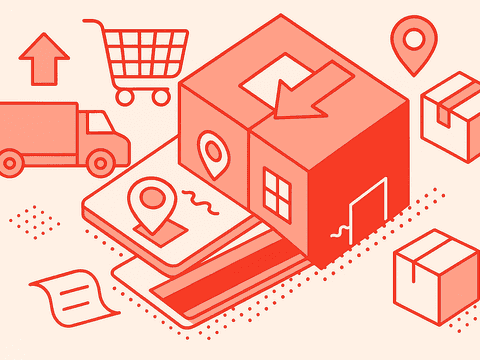TL;DR
- Real-time parcel tracking builds trust. 96% of customers expect accurate delivery updates, making automated shipment tracking a must
- Choose tracking tools based on cargo type. Some apps focus on freight and internal logistics, others on external package delivery and customer notifications
- Pricing depends on volume and usage. The best tracking software offers flexible fees per shipment, package, or truck, with real-time monitoring included
- Outvio manages the full logistics flow in eCommerce. It’s the only tool combining tracking, returns, helpdesk, and upsells in one branded system
Every parcel is a promise. With 96 % of shoppers expecting real-time updates, the tracking page now shapes their entire delivery experience. Purpose-built shipment-tracking software unifies freight, cargo, and last-mile data—internal and external—into one automated monitoring system. Your team gains instant alerts, proactive support, and fewer “where-is-my-order” calls.
In this guide you’ll see the 20 best real-time tracking apps—ranging from enterprise logistics platforms to agile parcel-delivery tools, so you can compare pricing, feature depth, and choose the solution that fits your shipping strategy.
Top 20 shipment tracking software tools by rating and category
| Name | Type | Best For | G2 Rating |
|---|---|---|---|
| Outvio | Post-purchase tracking + helpdesk + returns | eCommerce brands wanting full control, automation & branded experience | 4.8 |
| EasyPost | API-based shipping and tracking | Developers and platforms building custom logistics tools | 4.2 |
| ShippyPro | Multi-carrier tracking + returns | Retailers managing EU/US deliveries with analytics | 4.5 |
| ShipHawk | ERP-integrated shipping automation | High-volume logistics teams with complex fulfillment needs | 4.3 |
| ShipWorks | Desktop-based multi-carrier tracking | Warehouses needing internal tracking and automation | 4.4 |
| Beacon | Real-time GPS tracking for deliveries | Courier services and fleet operations needing live visibility | 4.5 |
| Aftership | Branded tracking + notifications | eCommerce brands focused on customer updates and upsells | 4.6 |
| Sendcloud | EU-focused tracking & return automation | European merchants looking for a simple all-in-one shipping solution | 4.7 |
| Narvar | Enterprise post-purchase suite | Large brands needing predictive delivery and WMS/CRM integration | 4.3 |
| ParcelLab | Experience automation + exception handling | Brands focused on post-purchase engagement and support reduction | 4.7 |
| Clickpost | API tracking + courier allocation | 3PLs and ecommerce with high-volume parcel logistics | 4.7 |
| Shipup | Branded tracking + marketing content | Brands aiming to boost loyalty through tracking engagement | 3.7 |
| TrackingMore | API tracking across 900+ carriers | SaaS tools and devs needing scalable integration | 4.7 |
| Parcel Perform | Data-first tracking + analytics | Global retailers needing insight into delivery performance | 4.7 |
| Shipwell | TMS + freight + tracking | Freight-heavy businesses managing both parcel and LTL shipments | 4.6 |
| Convey | Last-mile delivery insights | Enterprises focused on failed delivery prevention | 3.0 |
| PitneyTrack | Internal mailroom tracking | Corporate mailrooms tracking office parcels and documents | 2.3 |
| Detrack | GPS + POD + mobile delivery tracking | Logistics providers and on-the-ground delivery operations | 4.5 |
| LateShipment | Refund automation + delay analytics | Brands looking to automate refund claims and improve shipping costs | 4.7 |
| WeSupply Labs | Omnichannel tracking + returns | Merchants using platforms like Shopify or Magento for post-purchase UX | 4.5 |
What is an online shipment package tracking software?
Online package tracking software is a logistics tool that lets businesses and customers monitor shipments at every stage, warehouse, transit, and delivery.
The best platforms include features like branded tracking pages, delivery alerts, return management, performance dashboards, and even product upsells.
Some types of online tracking platforms include:
Package/Parcel tracking software
Helps you track individual packages from the moment they leave your warehouse to the customer’s doorstep. It's perfect for offering real-time visibility during last-mile delivery.
Order/Shipment tracking software
Shows the full order journey and keeps both customers and support teams aligned. If there’s a delay, the customer gets notified automatically.
Internal/Inbound tracking software
Used to manage packages arriving at offices, warehouses, or internal departments. It ensures everything received is registered, traceable, and delivered to the right person.
Freight/Cargo tracking software
Focused on heavy or long-distance shipments like pallets, containers, or international freight. It helps monitor status, location, and delays across complex routes.
Benefits of using parcel tracking software
- 21% of support tickets are “Where Is My Order?” (WISMO) inquiries. Real-time shipment tracking cuts these by providing proactive updates, freeing up your support team
- 91% of consumers actively track their packages. Offering transparent, branded tracking pages aligns with customer behavior and strengthens trust
- 85% of shoppers expect consistent updates. Automated notifications keep customers informed, reducing anxiety and improving the customer experience
- 93% of customers want regular shipment updates. Custom tracking pages become meaningful engagement touchpoints—perfect for branding and upsell opportunities
Best 20 package tracking systems reviewed in 2025
1. Outvio
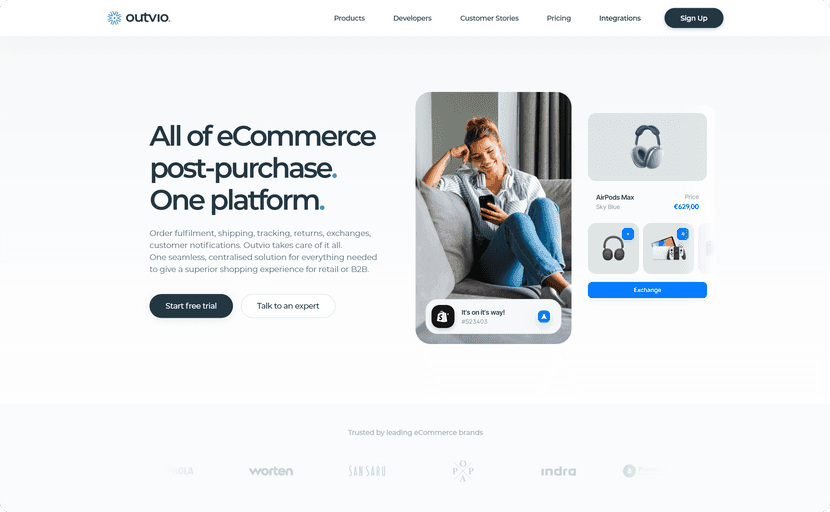
Outvio transforms shipment tracking into a revenue engine by turning every real-time update into a branded micro-campaign that drives repeat purchases, cross-sells, and higher lifetime value.
Its built-in segmentation engine targets messages by purchase history, location, and customer tier, so each buyer sees the offer most likely to convert.
Delivery intelligence monitors carrier data, resolves exceptions automatically, and sends proactive alerts that safeguard promised delivery dates. Shoppers land on a fully customizable tracking page that elevates your brand and recommends relevant products while they check their package status.
A native chatbot answers order questions instantly and approves returns or exchanges on the spot, freeing your team for higher-value work. With Outvio, logistics, marketing, and support converge in one system that grows revenue and delights customers.
G2 Rating
Benefits
- Fully customizable branded tracking experience
- Handles both outbound and inbound shipment tracking
- Includes return portal, exchange automation, and a chatbot for order tracking
- Unified post-purchase flow with carrier, order, and customer data in one place
- Helps increase repeat purchases with upsell modules on the tracking page
Pricing: Custom
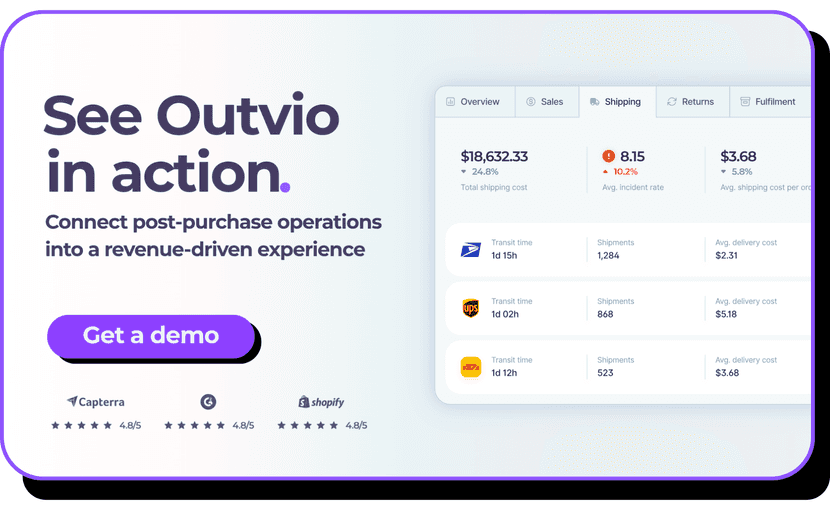
2. EasyPost

EasyPost is an API-driven internal parcel tracking system that allows developers to integrate shipping, label generation, address validation, and tracking across 100+ carriers. It’s a go-to for SaaS platforms and businesses building custom logistics tools.
G2 Rating
Pros
- Developer-friendly with strong documentation
- Supports global and inbound parcel monitoring
- Scalable and flexible for any custom need
Pricing: Pay-per-use model with API usage fees; includes free trial
3. ShippyPro

ShippyPro is an easy-to-use parcel tracking system software for online retailers. It supports real-time shipment updates, multi-carrier label printing, and automated notifications. With built-in returns and performance analytics, it suits brands looking to optimize deliveries and handle first line package tracking.
G2 Rating
Benefits
- Fast integration with ecommerce platforms
- Offers both tracking and returns
- Works well across EU and US carriers
Pricing: Starts at €220/month with extra fees per label; free trial included
4. ShipHawk
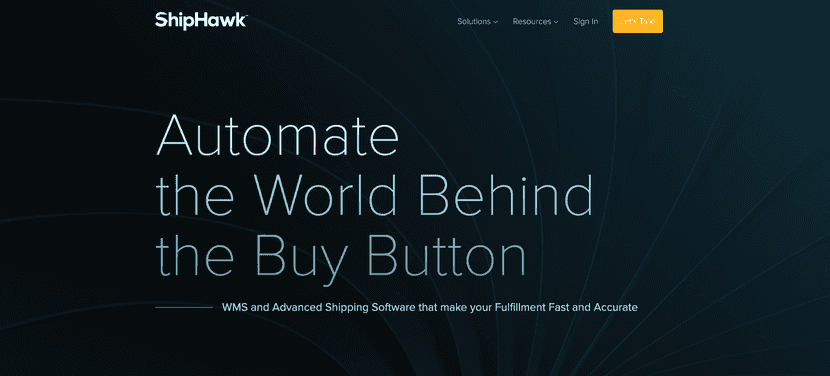
ShipHawk is an enterprise-level parcel tracking platform that automates fulfillment, shipping, and real-time delivery tracking. With smart rate shopping, ERP integration (like NetSuite), and order-level rules, it’s ideal for complex logistics environments.
G2 Rating
Benefits
- Excellent for high-volume, ERP-driven shipping
- Custom automation logic saves time and cost
- Strong visibility across operations
Pricing: Fully custom with usage-based licensing; no free trial offered
5. ShipWorks
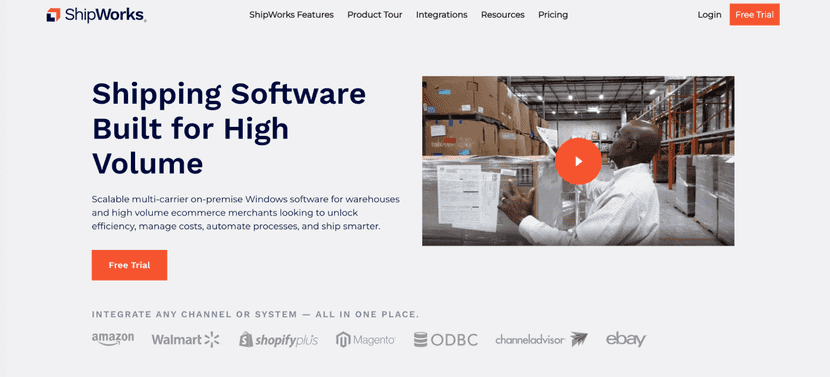
ShipWorks offers a desktop-based logistics tracking system for large-scale shippers. It combines batch label printing, multi-carrier tracking, and automation rules — ideal for warehouse or office teams needing efficient internal mail tracking platforms.
G2 Rating
Benefits
- High-volume processing power
- Custom automation rules for shipping and tracking
- Supports many marketplaces and carriers
Pricing: Plans range from $149 to $799/month with shipment-based fees; free trial available
6. Beacon
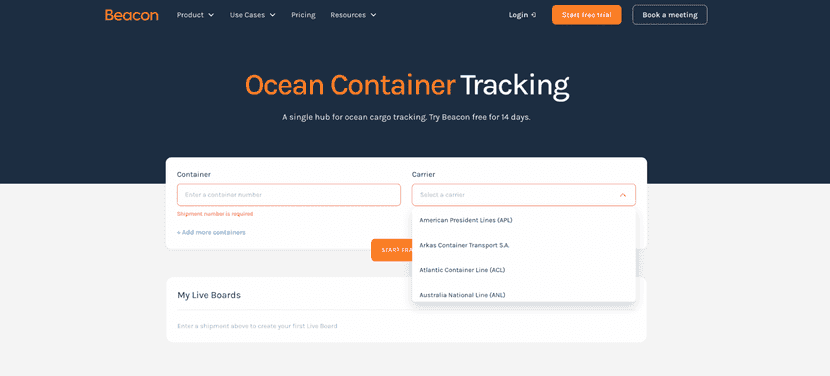
Beacon is a real-time GPS-based inbound parcel monitoring platform designed for logistics teams. It enables live vehicle tracking, route optimization, and delivery proof, making it perfect for courier businesses or complex delivery ops.
G2 Rating
Benefits
- Live geolocation and delivery tracking
- Built for field teams and live operations
- Scalable for fleets
Pricing: Custom pricing per carrier; free trial available
7. Aftership
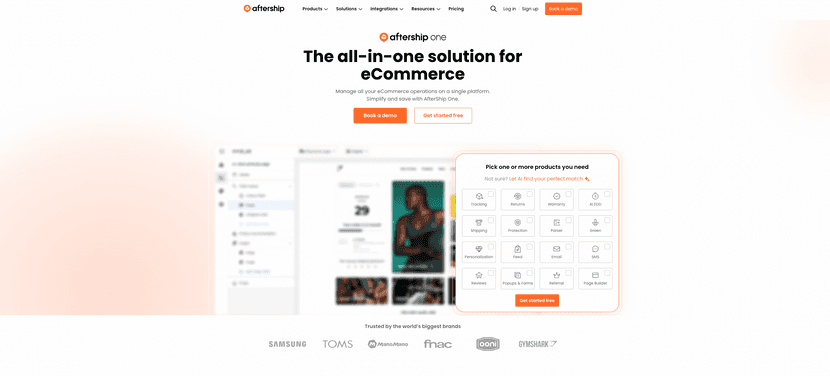
Aftership is a popular parcel tracking system software offering branded tracking pages, automatic email/SMS notifications, product recommendations, and analytics. It's trusted by thousands of ecommerce brands to improve the post-purchase experience.
G2 Rating
Benefits
- Branded tracking with upsell widgets
- Supports 1,000+ carriers
- Easy to implement and scale
Pricing: Starts at $11/month with per-shipment fees; free trial available
8. Sendcloud

Sendcloud is a shipping automation tool with built-in internal parcel tracking software features like tracking emails, branded pages, and return workflows. Designed for European ecommerce brands, it connects easily with major stores and carriers.
G2 Rating
Benefits
- Easy to learn
- Fast setup for tracking and returns
- Strong support in the EU
Pricing: From €29/month to €799/month with label fees; includes free trial
9. Narvar
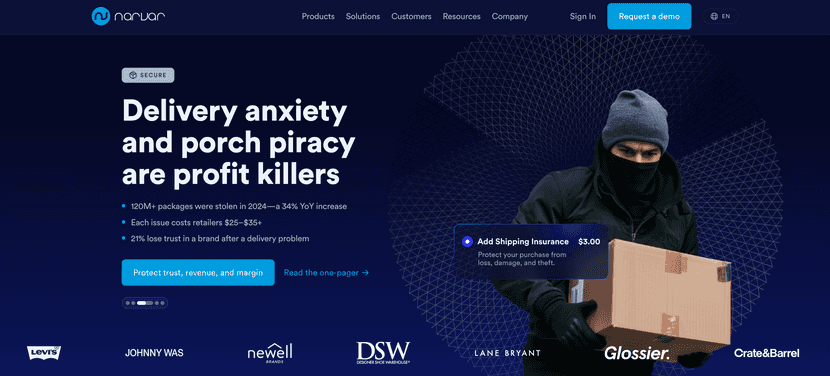
Narvar delivers enterprise-grade online post purchase tracking software, focusing on branded tracking, proactive notifications, predictive delivery dates, and returns. It’s trusted by brands like Levi’s and Sephora to elevate their post-purchase journey.
G2 Rating
Benefits
- Rich features for personalization and CX
- Powerful analytics and forecasting
- Integrates with WMS and CRM tools
Pricing: Custom enterprise pricing; no free trial available
10. ParcelLab
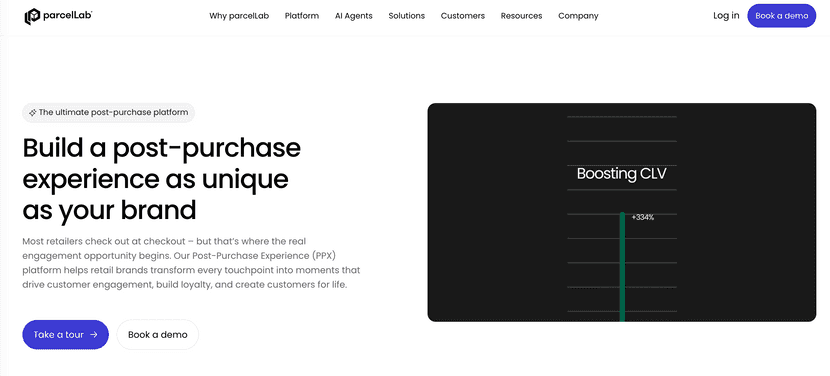
ParcelLab is a customer experience platform with advanced inbound parcel monitoring software capabilities. It lets brands control every touchpoint after purchase, with branded messaging, tracking, returns, and shipping insights.
G2 Rating
Benefits
- High level of customization
- Real-time exception handling
- Built to reduce WISMO tickets
Pricing: Custom enterprise pricing; no free trial available
11. Clickpost
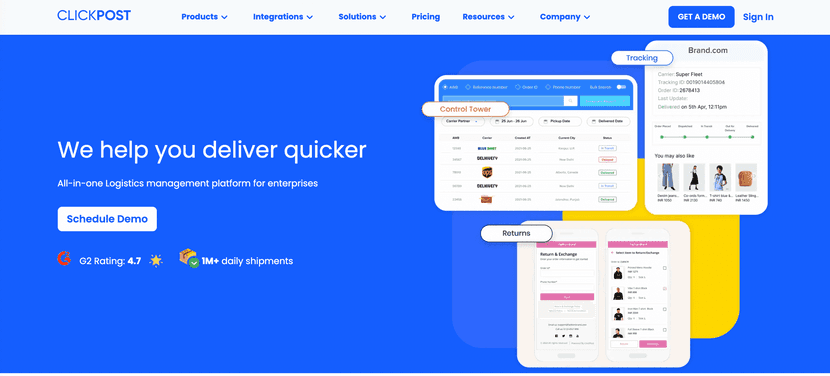
Clickpost is a logistics platform with inbound parcel monitoring and real-time API-based tracking. It automates carrier selection, sends live alerts, and lets businesses design tracking workflows, making it ideal for ecommerce and 3PLs looking to streamline deliveries.
G2 Rating
Benefits
- Smart courier allocation and tracking events
- Delay prediction and automated communication
- God internal parcel tracking system customization
Pricing: Only available through custom quotes; no free trial
12. Shipup
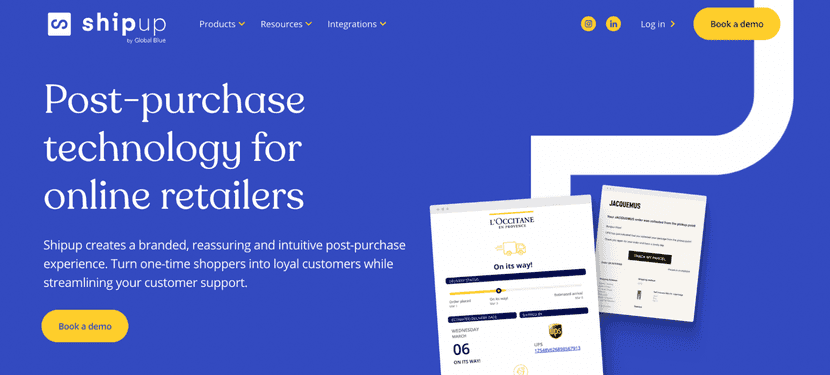
Shipup is a customer-centric parcel tracking platform that focuses on branded experiences, proactive delivery alerts, and post-purchase engagement. Its tracking pages can include product recommendations, delivery status, and marketing content — all tailored to the customer.
G2 Rating
Benefits
- Strong branding options
- Easy integration with ecommerce platforms
- Great for increasing loyalty and upsell
Pricing: Starts at $299/month with shipment-based fees; no free trial
13. TrackingMore
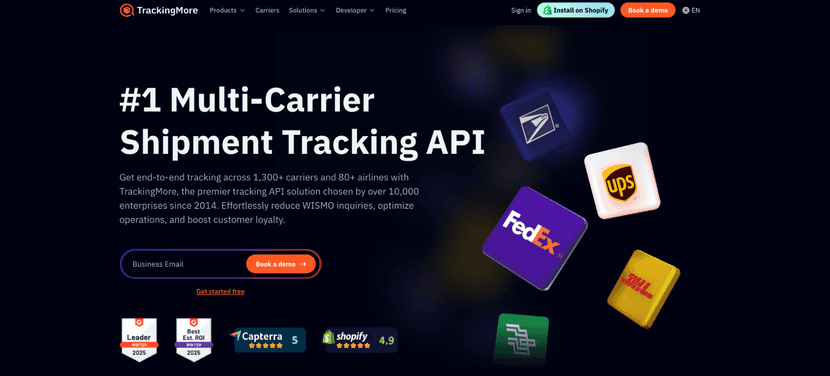
TrackingMore offers a robust parcel tracking system software with support for 900+ carriers, real-time delivery updates, and webhook integration. It’s built for developers and SaaS platforms looking to add tracking into their product flows.
G2 Rating
Benefits
- Extensive carrier coverage
- Flexible API and webhook support
- Real-time sync and event triggers
Pricing: From $9 to $59/month, billed per shipment; free trial included
14. Parcel Perform
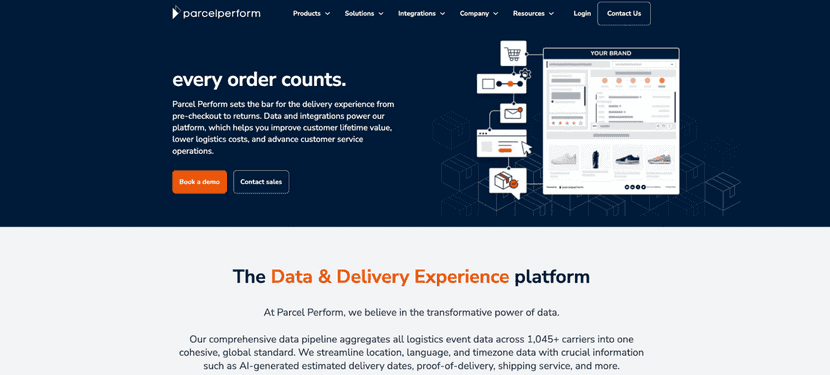
Parcel Perform delivers data-rich inbound parcel monitoring platform capabilities, with emphasis on delivery performance analytics, real-time tracking, and post-purchase experience enhancement. Ideal for global retailers and cross-border sellers.
G2 Rating
Benefits
- Exceptional analytics on carrier performance
- Customizable tracking for different markets
- Scales with international volume
Pricing: Custom pricing with no free trial option
15. Shipwell
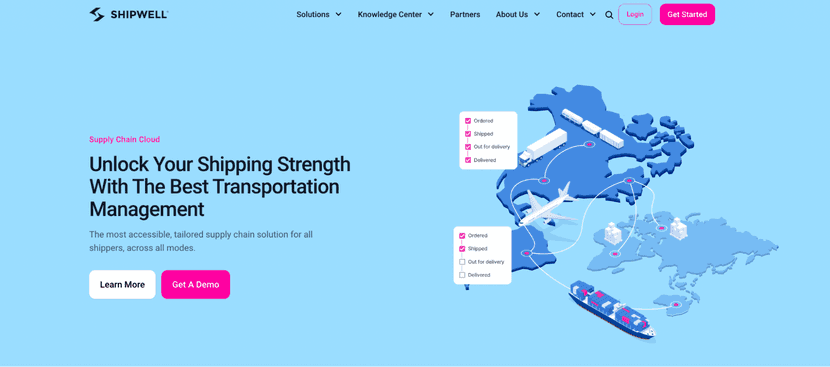
Shipwell is an end-to-end logistics platform with integrated parcel tracking system software, TMS, and freight visibility. It includes predictive ETAs, exception alerts, and real-time tracking for both outbound and inbound parcel logistics.
G2 Rating
Benefits
- Combines TMS + parcel tracking in one
- Excellent for managing freight and parcels
- Predictive insights improve planning
Pricing: Custom pricing only; no free trial available
16. Convey
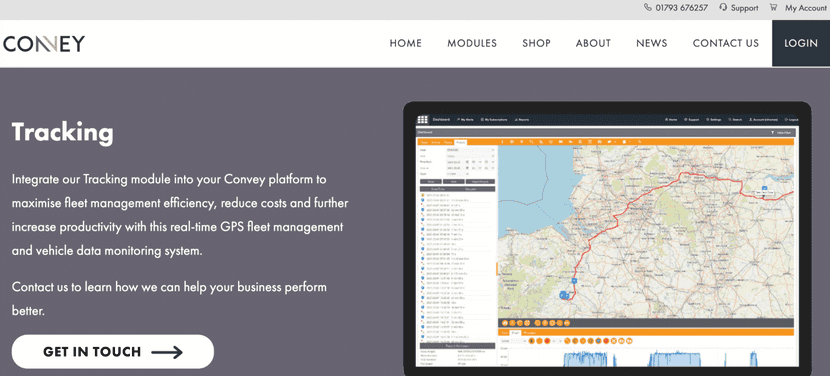
Convey parcel tracking system software designed for last mile management, real-time delivery visibility, and predictive logistics. Ideal for brands needing insight into failed deliveries or customer complaints before they happen.
G2 Rating
Benefits
- Proactive delivery issue alerts
- Excellent for large supply chains
- Helps reduce negative CX impact
Pricing: Pay-per-use pricing model; free trial available
17. PitneyTrack
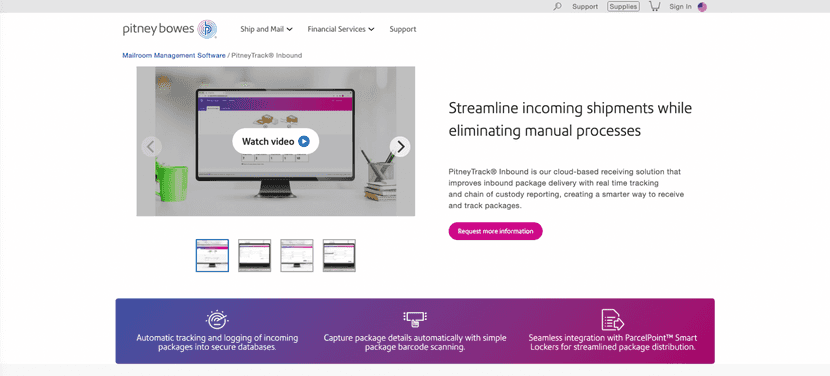
PitneyTrack (by Pitney Bowes) is a professional internal mail tracking system for office mailrooms and enterprise environments. It offers barcode scanning, delivery confirmations, and mail audits to track inbound documents and packages internally.
G2 Rating
Benefits
- Great for enterprise and office parcel accountability
- Simple UI, easy training for mailroom staff
- Digital chain of custody
Pricing: Custom pricing plans; free trial available
18. Detrack
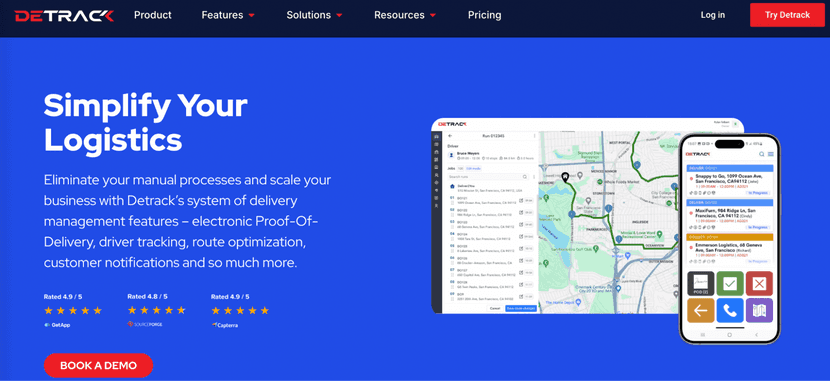
Detrack is a last-mile delivery and internal parcel tracking software offering live GPS tracking, proof-of-delivery (POD), photo capture, and e-signature collection. Ideal for logistics providers and local delivery services.
G2 Rating
Benefits
- Real-time driver location and delivery status
- Supports contactless POD with photo or signature
- Mobile app included for field teams
Pricing: Starts at $29/month, billed per driver or truck; includes free trial
19. LateShipment

LateShipment is a parcel tracking system software specialized in managing delay-related refunds and automating carrier claims. It also provides exception alerts, performance reports, and tools to optimize the post-purchase experience.
G2 Rating
Benefits
- Automates delay claims without manual intervention
- Offers strong visibility into carrier performance
- Helps reduce shipping costs directly
Pricing: Pay-per-use pricing model; free trial available
20. WeSupply Labs
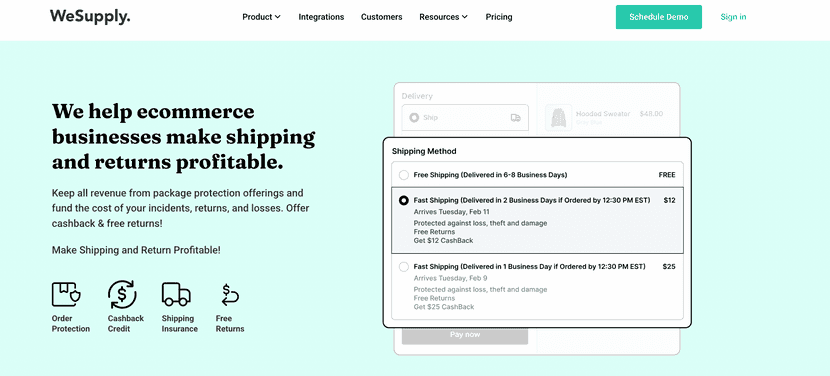
WeSupply Labs is an inbound parcel tracking software and post-purchase management platform that combines proactive notifications, branded tracking, omnichannel updates, and return portals. It improves communication and keeps customers informed at every step.
G2 Rating
Benefits
- Easy integration with platforms like Shopify, Magento, and BigCommerce
- Supports omnichannel tracking and visual customization
- Significantly reduces WISMO tickets
Pricing: From $60/month up to $975/month, charged per order; free trial included
Parcel tracking system price comparison for 2025
| Tool | Lower Plan | Higher Plan | Fee |
|---|---|---|---|
| Outvio | Custom | Custom | Custom |
| EasyPost | Pay per use | Custom pricing | API usage fees |
| ShippyPro | €220/month | Custom | Label fee |
| ShipHawk | Custom | Custom | Usage-based licensing |
| ShipWorks | $149/month | $799/month | Shipment fee |
| Beacon | Custom | Custom | Per carrier |
| AfterShip | $11/month | $239/month | Per shipment |
| Sendcloud | €29/month | €799/month | Per label |
| Narvar | Custom | Custom | Custom |
| ClickPost | Custom | Custom | Custom |
| Shipup | $299/month | $599/month | Per shipment |
| TrackingMore | $9/month | $59/month | Per shipment |
| Parcel Perform | Custom | Custom | Custom |
| Shipwell | Custom | Custom | Custom |
| LateShipment | Pay per use | Custom | Pay per use |
| WeSupply Labs | $60/month | $975/month | Per oder |
| Convey | Custom | Custom | Custom |
| PitneyTrack | Custom | Custom | Custom |
| Detrack | $29/month | $39/month | Per driver/truck |
| Parcellab | Custom | Custom | Custom |
Outvio, the best way for shipping and carrier tracking
Most tools stop at sending order updates. Outvio turns every delivery into a branded experience. Show customers exactly where their order is, recommend new products while they wait, and keep full control of what happens after checkout — all from one place.
Outvio keeps us and the customer on the same page. They always know what’s happening with their order, which builds trust and improves their shopping experience. Ramón Montalbán, CTO
No setup. No risk. Book a demo.


